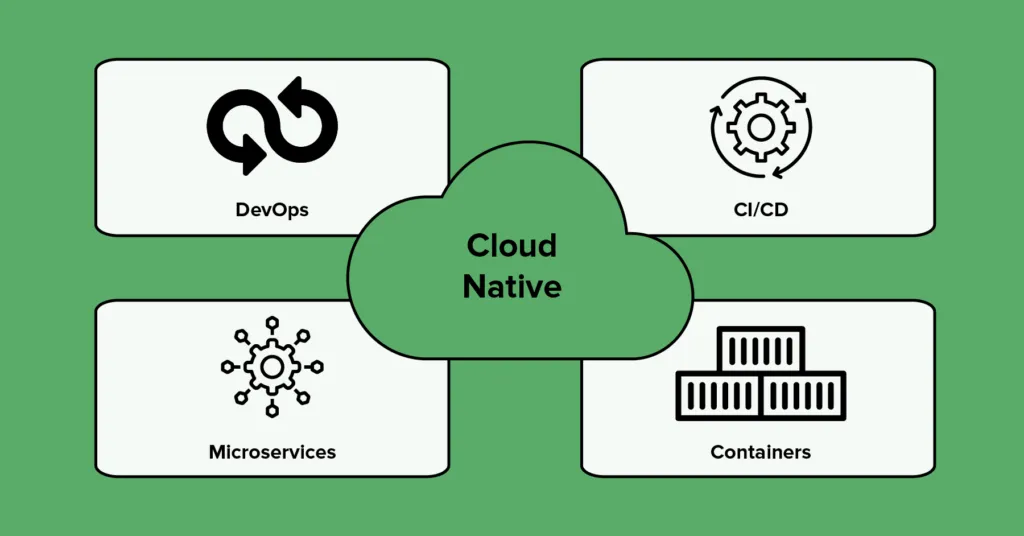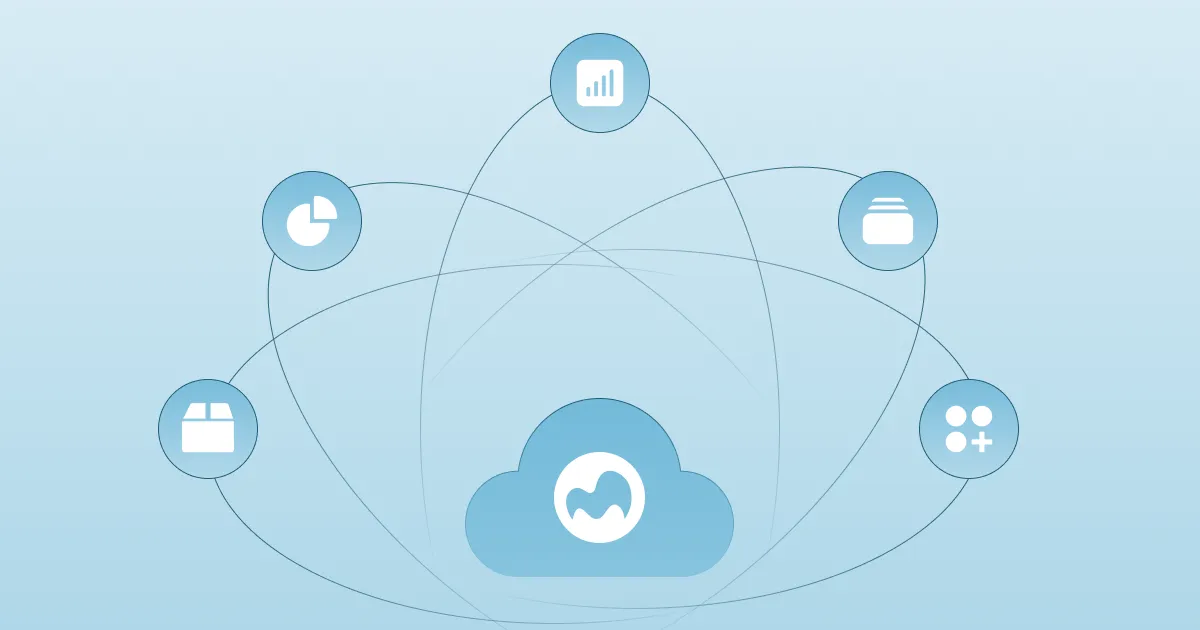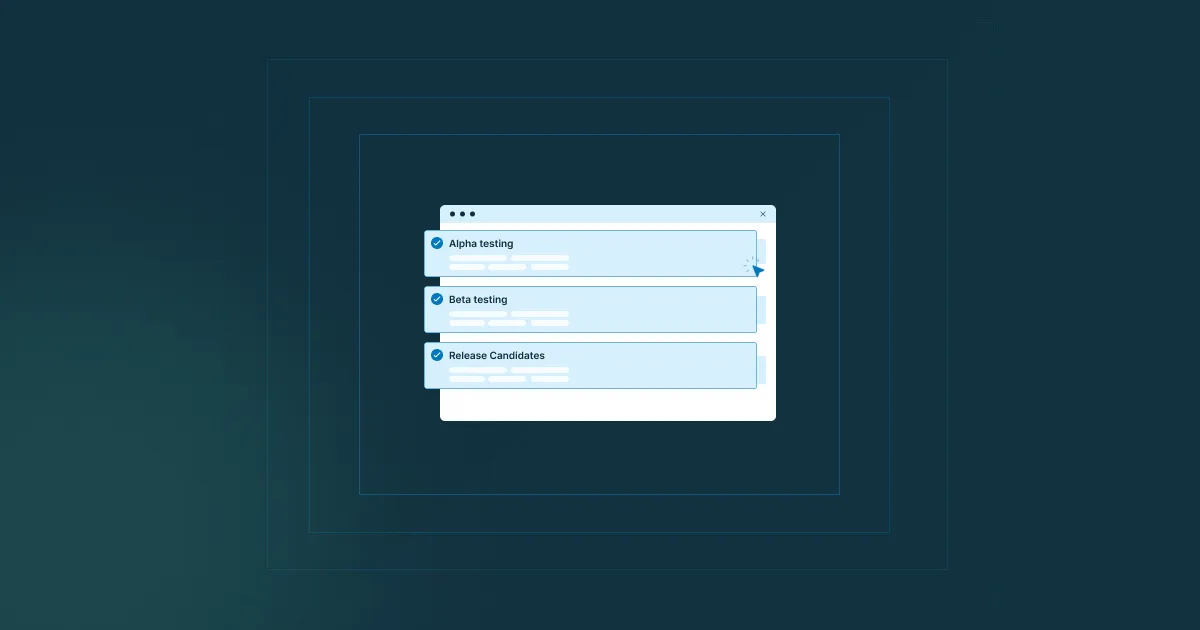A Comprehensive Introduction to Cloud-Native DevOps

The process of developing and implementing cloud-native applications utilizing DevOps techniques is known as cloud native DevOps. It is a strong and effective approach for delivering software applications, improving collaboration between teams, better automation, continuous testing, monitoring, and feedback.
DevOps is a combination of development and operation processes, where the main goal is to deliver software more reliably and efficiently. Therefore, cloud-native DevOps principles are implemented in cloud-native live environments.
In this blog, we'll look at some of the cloud native DevOps services and how they might be applied to cloud application development and deployment.
What Is Cloud-Native Approach to Software Development?
So, what exactly is the cloud-native approach? In simple terms, it’s about building and running cloud native applications in a way that fully leverages the advantages of the cloud. Instead of relying on traditional on-premise infrastructure, cloud-native teams use tools and services that are built for the cloud and live in the cloud.
Cloud-native apps are designed to be fast, flexible, and easy to monitor. They’re built for change, with quick updates and frequent cloud native deployments baked into the process. Instead of trying to prevent failure at all costs, these systems are designed to recover rapidly and even get better in real time. The app itself has built-in monitoring and control. Because everything is smooth and linked together, there is no need to rely on external systems.
The concept of cloud-native started gaining traction about a decade ago, when industry leaders began talking about a new way to build apps. One of the earliest mentions came from Paul Fremantle. In one of his early blog posts, he made a key point: if you want your apps to run well in the cloud, you need to design them for the cloud.
Today, cloud-native involves microservices, containers, continuous integration and delivery (CI/CD), multi-cloud strategies, and more. A great place to explore all these tools is the CNCF Cloud Native Interactive Landscape. It’s a living map of the cloud-native world to help developers find the right open-source tools for modern app development.
What is Cloud-Native DevOps?
When bringing these two concepts together, cloud-native DevOps becomes a set of practices focused on continuous development, automation, and collaboration across teams, all aimed at delivering a better experience for the end user. At its core, cloud-native DevOps is about helping organizations become more agile and responsive. Technologies like Kubernetes and containers play a big role here, enabling automation and improving scalability.
But it’s not just about the tools. These practices touch nearly every part of the organization. That means rethinking the company’s culture, how people work together, which tools they use, and the processes they follow. Embracing a DevOps mindset is key to this shift. It promotes better coordination between teams and encourages a more integrated approach to technology and operations.
Create an environment where teams are motivated to collaborate closely and share feedback quickly. That faster feedback loop is what allows you to iterate quickly and make improvements in real time.
On the technical side, adopting cloud-native DevOps also means embracing modern technologies like containerization and microservices. These are the core for building and running flexible, scalable applications in today’s cloud-driven world.

How to Get Started With Cloud-Native DevOps?
These are the options to get started with a cloud-native strategy:
- Implementing a cloud-first strategy by choosing a cloud provider instead of an on-premises one
- Adopting a multi-cloud strategy if it meets business needs more closely
- Embracing DevOps, which is obviously what we’re going to focus on further in this post.
When companies realize that agile cloud native development requires both automation and culture transformation to produce quality applications faster, DevOps becomes a priority. Handling multiple hybrid environments or streamlining infrastructure stuff can get very complicated. That’s why the popularity of tools that align cloud-native and DevOps processes is rising rapidly.
Best Practices and Tools for Cloud-Native DevOps Implementation
To make the implementation of cloud-native DevOps easier, these are some things you should pay attention to:
- Containerization plays a key role in modern software development. It allows you to build applications that run reliably across different environments and helps bridge the gap between development and operations teams by reducing implementation conflicts and making collaboration between developers and testers much smoother.
- Shifting from a monolithic architecture to microservices further boosts agility. It brings clarity and structure by introducing a shared set of tools, terms, and processes for both development and operations. Microservices enable more advanced automation and pave the way for agile product development, an essential foundation for continuous delivery.
- To manage all of this efficiently, you’ll need a container orchestration platform. Kubernetes is by far the most widely used because it tackles key challenges around compute, storage, and networking at scale.
- Another critical step is automating your CI/CD pipelines. This not only simplifies the delivery process but also minimizes the risk of human error. For developers, that means fewer distractions and more time to focus on what really matters: building efficient products.
- Finally, following the Twelve-Factor App methodology can bring greater consistency and transparency to your codebase. It provides best practices that make your applications easier to develop, deploy, and scale, especially in cloud-native environments.
Getting started with cloud-native DevOps means focusing on collaboration, automation, and scalability from day one. By adopting the right tools, practices, and mindset, your team can deliver faster and more reliable software.
Common Mistakes in Adopting Cloud-Native DevOps
While cloud-native DevOps offers powerful advantages, the journey isn’t always smooth. Organizations often face common challenges that can slow progress or undermine long-term success. Some of them are:
Using Too Many Tools
Once you switch to cloud-native DevOps, you’ll try automating as many processes as possible. However, you don’t do this by just adding and adding tools. You have to pick the right tools and make the best combination that’s right for your application. Overusing tools will also cost you a lot of time and money.
Another mistake here is that developers often get too reliable of a certain tool. The essence of DevOps, however, lies in the team spirit and the implementation of correct practices that contribute to increased productivity and enhanced processes.
Avoiding Continuous Monitoring
While testing inside the implementation pipelines makes the things more straightforward and flowing, it also makes them limited and incomplete. Continuous monitoring, on the other hand, can optimize the entire process by highlighting each malfunction that happens even after the testing.
Not Paying Enough Attention to Security
Security checks can be quite time-consuming and costly. Teams often think of that security checking capabilities as something that is put to use within the CI/CD workflows. The implementation of a separate tool that takes care of security is a critical move for DevOps to turn and avoid any vulnerabilities in the process.
Making the Transition too Fast
Adopting cloud-native DevOps should be a slow process with a lot of learning on the way. Expecting a company that has been using on-premise applications to immediately align all their structures and platforms into a single cloud-native architecture is simply impossible. Maybe you can quickly make new cloud-native applications, but transitioning existing applications will take a while.
The best solutions would be to go step-by-step. Start by migrating applications to the cloud and continue with transitioning from monolith to microservices. Then, you can set up containers and container orchestration platforms. However, none of this will be successful unless you undergo the culture shift.
Conclusion
Successfully implementing cloud-native DevOps enables businesses to bring new technologies to market faster, accelerating their digital transformation journey. By significantly reducing cloud costs while boosting efficiency and performance, the cloud-native approach has become a game-changer for companies that rely on software products. Fully embracing its potential unlocks scalable, on-demand development capabilities that empower teams to innovate without limits.
Subscribe to receive the latest blog posts to your inbox every week.
*By subscribing you agree to with our Privacy Policy.

Relevant Posts

.webp)

